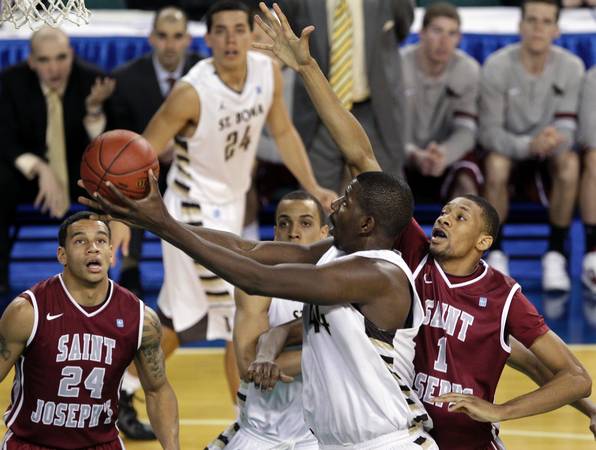Four Thoughts from Nashville …
Posted by David Changas on March 18th, 2012Here are few thoughts on Friday’s NCAA Tournament action in Nashville, and a look ahead to Sunday’s action.
1) The first thing that stood out in watching the eight teams in the NCAA Tournament pod in Nashville was the level of parity that was on display, and which is prevalent throughout college basketball. In the first half of the day’s first game, the East Region’s #11 seed, Texas, took futility to a new level, hitting 4 of 25 shots on its way to a 31-17 halftime deficit against #6 seed Cincinnati. After falling behind by 19 early in the second half, the Longhorns eventually tied the game, which wasn’t decided until the final minutes. In the nightcap, South Florida, the #12 seed in the Midwest Region, made Texas look efficient by going 3 for 27 and scoring 15 points in the first half. Somehow they trailed Temple by only four, and the Bulls came out of the locker room on fire and shot 60% for the second half on their way to a 58-44 win over #5 seed Temple. That was the largest spread of any of the final scores here. Each of the day’s games was up for grabs going into the final minutes.
Beyond the obvious – that #12 and #13 seeds won here on Friday, and that two #15 seeds won elsewhere on the same day – it is apparent that the disparity in talent between the mid-majors and the BCS schools continues to narrow. In watching teams in a pod in which there were no 1-16 or 2-15 matchups, it was clear that parity abounds. St. Bonaventure, the East Region’s #14 seed and the lowest-seeded team here, played ACC Tournament Champion Florida State to the wire and easily could have won the game. The Bonnies were the fourth-best team in what many consider the best mid-major league – Atlantic 10 – and they were able to control most of their battle with arguably the ACC’s best squad. And while it would have been an upset, no one here would have been shocked if it had happened. St. Bonaventure had good players, including the sensational Andrew Nicholson, and the overall difference in talent levels between the two squads was not as vast as it may have been in the past.
Transfers are also an important part of this equation. Case in point is Ohio forward Walter Offutt, who left after two years at Ohio State in which he rarely saw the floor. Offutt, a top-100 player coming out of high school, is one of many former high-major players we have seen over the years make a difference at the mid-major level. He is flourishing in Coach John Groce’s system and is the team’s second leading scorer. While he couldn’t get into the rotation in two years in Columbus, Offutt has flourished in relative obscurity in Athens. He is the type of player that allows a team like Ohio to compete when it faces better competition in March.
Upsets have long been a part of March Madness, but as we see more of them, we should be less surprised. The George Masons, Butlers, and VCUs of the world have shown us that there is plenty of talent outside the BCS leagues, and the parity on display in Nashville on Friday typified that.















































